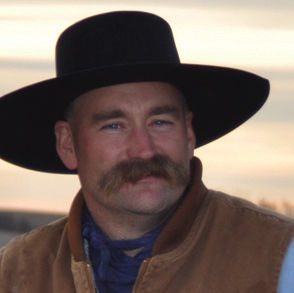I have officially spoken in all but nine states in a one-year period of time about the dangers of a potential 30 x 30 land grab.
In my opinion, it is a United Nations initiative to control 30% of the world’s land mass by 2030.
I have been following RethinkX, an independent think tank that analyzes and forecasts the speed and scale of technology-driven disruption and its implication across society. A representative from the organization joined me on the radio a few years back. The organization claims to be non-partisan and not advocating for anything but simply sharing the vision they see unfolding in the world of food production.
Let me just give you a few of the highlights from a RethinkX report. It notes:
“By 2030, the number of cows in the U.S. will have fallen by 50% and the cattle farming industry will be all but bankrupt. All other livestock industries will suffer a similar fate, while the knock-on effects for crop farmers and businesses throughout the value chain will be severe.
“Rethinking Food and Agriculture shows how the modern food disruption, made possible by rapid advances in precision biology and an entirely new model of production we call Food-as-Software, will have profound implications not just for the industrial agriculture industry, but for the wider economy, society, and the environment.
“By 2035, about 60% of the land currently being used for livestock and feed production will be freed for other uses. This represents one-quarter of the continental U.S.—almost as much land as was acquired during the Louisiana Purchase of 1803. The opportunity to reimagine the American landscape by repurposing this land is wholly unprecedented.
“If all this freed land were dedicated to reforestation, all current sources of U.S. greenhouse gas emissions could be fully offset by 2035.”
The overriding concept left out of this forecast and all equations are the cow and the importance of animal life to a healthy planet. Ruminants eat what nothing else can. This outfit actually talks about “freed” land being utilized for urban growth centers. Land that is not grazed can be ripe for serious devastating fire. Nearly 74% of the world’s land mass is not suitable for growing human crops but can grow cellulose material that ruminants convert into the most nutrient-dense food substance on the planet.
Additionally, no one who actually understands science can say anything other than the more animals you have, the more plants you have and consequently the more photosynthesis that occurs and better health of the planet is the result. We have clearly seen the benefit of grazing animals even in reversing the deserts of the world. The work of people like Allan Savory have proven that the answer to a healthy ecosystem is more animals not fewer.
So here is the real question: What will we be doing about this? To make it even worse, if you get on the east side of the Mississippi River few folks even know what 30 x 30 really means.
Our problem at this point has been complacency. If we collectively do something now we may be able to avert a serious land usage problem. If we just sit back and say, “Oh, well. It’s just another government program that may benefit us. We will enjoy starvation.”
Editor’s note: The views expressed here are the author’s own and do not represent the views of High Plains Journal. Trent Loos is a sixth generation United States farmer, host of the daily radio show, Loos Tales, and founder of Faces of Agriculture, a non-profit organization putting the human element back into the production of food. Get more information at www.LoosTales.com, or email Trent at [email protected].
